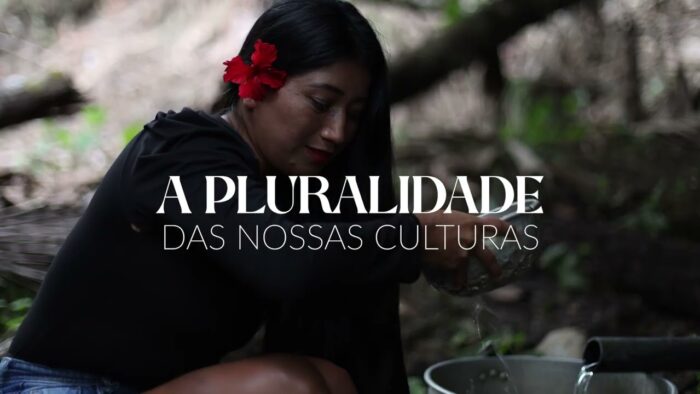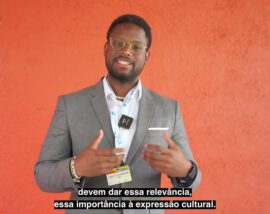Organization: Cuso International
Country: Colombia
Closing date: 27 Oct 2017
Contract type: Permanent, competitive compensation and benefits
Location: Bogotá, Colombia
Reports to: Project Director, Colombia
Eligibility: Local national, must be legally able to work in Colombia
Relocation Allowance: Not applicable – This is a national position
Language requirements: Fully bilingual Spanish / English
How would you like to have a fulfilling career while also making real and lasting impact in the lives of many people around the world?
Cuso International is international development organization that works to reduce poverty and inequality through the efforts of volunteers, partnerships and donors. We have programs in 20 countries around the world.
Funded by the Government of Canada, our project on Sustainable Colombian Opportunities for Peacebuilding and Employment (SCOPE) will develop programs that provide skills training and work internships for youth, women and victims of the conflict matched to the labour market needs of the private sector in seven major Colombian cities: Soacha-Bogotá, Medellín, Cali, Cartagena, Barranquilla, Buenaventura and Quibdó.
We are currently looking for an outstanding individual to join our team in Bogota, Colombia. Reporting to the Project Director, the Communications Manager will be responsible for positioning the SCOPE project in Colombia through the development and implementation of a communications and marketing strategy that will support the success of the project and provide timely and relevant information to project stakeholders. The individual must be eligible to work in Colombia.
KEY RESPONSIBILITIES
Communications
· Develop close working relationships with project partners and stakeholders – all parties required to establish a shared vision of the project and achieve results.
· Develop and implement a communications and marketing strategy in line with the goals and objectives of the SCOPE project, including strong participant recruitment.
· Oversee the development of communication and marketing materials for the project, ensuring compliance with Cuso International and donor protocols and policies.
· Ensure high quality of SCOPE public documents, reports, and communication and marketing materials.
· Edit and revise reports, including narrative donor reports.
· Develop key messages for SCOPE for targeted audiences, context and institutional priorities, promoting sense of shared purpose related to the SCOPE project.
· Develop messages to attract support and inputs that motivate change in social norms that engender discrimination against the poor and vulnerable people, particularly the youth, women and victims of conflict.
· Manage media relations, strategic partnerships and networking to promote public representation and visibility of SCOPE, primarily at local and national level.
· Liaise with Cuso International in Colombia, regionally and internationally to amplify results of SCOPE project and support the stewardship of key partners and donors.
· Liaise with the Cuso International communication and marketing team at headquarters to coordinate design, development and production of communications material to ensure branding procedures are followed:
- Develop and implement a social media plan that serves the communications and marketing needs of SCOPE. This may include: Maintain day‐to‐day online interface in an efficient, effective and user-friendly manner guided by communication best practices.
- Generate and edit tailored web information and multimedia contents.
- Assemble and analyse inflow from the SCOPE various social media tools and general web data, including profile of audiences for analysis and response as most appropriate.
- Create forums for knowledge sharing, discourse and expression of opinions on employment generation for vulnerable populations.
- Motivate volunteers, beneficiaries, employers and all stakeholders to drive traffic to the SCOPE e-platforms.
· Develop internal communications with staff and project teams to*:*
- Integrate context relevant organizationally driven communication strategies into all projects.
- Engage beneficiaries and strategic partners at local and national levels to promote common goals.
- Enhance strategies and bring new ideas to attract new sources of funding.
- Present result and impact of SCOPE interventions to stakeholders, donors and the public.
Research, Knowledge Building and Management
· Development of public information on opportunities in Colombia prioritizing landmark activities and developments for awareness on SCOPE communication channels.
· Conversion of publications into key advocacy messages for campaigns using factsheets, reports, briefings and press release, targeting diverse audiences.
· Compiling annual reports on communication best practices and lessons learned directly linked to the SCOPE goals of sustainable, inclusive, equitable and peacebuilding-oriented economic growth for the poor and vulnerable.
Other Responsibilities
· Inform and advise the Project Director on project communication strategic directions.
· Carry out any other duties as required by the Project Director, from time to time.
· Support Cuso International priorities with respect to profile and visibility in Colombia as needed.
REQUIRED QUALIFICATIONS
Language:
Fully bilingual English / Spanish. Must have superb written and oral communication skills in both English and Spanish.
Education
· Bachelor’s degree or equivalent required, preferably in Communication, Social Sciences, Political Science, Law, Journalism, Public Relations, Development or related discipline in the field of Humanities.
· Specialization in related fields or gender and human/women’s rights field would be an asset.
Experience
· At least 4 years of relevant professional experience in communications, public relations, development work, preferably in social and gender issues.
· Previous experience in field of advocacy for human or women’s rights will be an advantage.
· Knowledge and experience of information technology (IT) and skills.
· Experience in data processing.
Knowledge
· Knowledge and passion for social media and web based communication.
· In depth knowledge and experience of the various social medias.
· Demonstrated knowledge of IT (Outlook, Email, databases, basic excel, PowerPoint) and willingness to develop IT skills in order to improve effectiveness at work.
· Significant practical, analytical and theoretical knowledge and experience of international development work in Colombia including:
ü An appreciation of the contribution volunteering in its many forms can bring to development.
ü A strong awareness of gender and equity issues and knowledge of issues affecting poor and vulnerable people, youth, women and victims of conflicts.
ü An appreciation of the contribution that the private sector and business development approaches can bring to development.
Abilities
· Strong ability to conceptualize issues and analyze data.
· Multitasking, organized and results oriented with ability to deliver in set time frames.
· Demonstrable ability for innovation and creativity that stands out and excels.
· Ability to work under pressure.
· Proven ability to work effectively in a number of teams, in a multi-cultural context and where teams may be geographically dispersed.
· Demonstrated ability to communicate good practices and learning in working with vulnerable groups that contributes to breaking down negative gender and generational stereotypes.
· Ability to present and represent Cuso International in a variety of communicate media to a variety of audiences including government, private sector, donors and civil society.
Skills
· Network or potential capacity to build it whatever the context, sensibilities or nuances.
· Demonstrated problem solving and decision-making skills.
· Demonstrated ability for crisis management and performance under pressure,
· High values of dialogue, transparency and accountability,
· Excellent time management, flexibility.
· Excellent communication skills – the ability to articulate project views efficiently and positively in various formats, including speech, panel, debate and group discussion aimed at diverse audiences.
· Strong networking skills and the ability to build relationships, alliances and networks in a fast paced ever changing work dynamic.
How to apply:
About Cuso International
We look for outstanding individuals globally who share our vision for a better world where all people are able to realize their potential, develop their skills and participate fully in society.
In return we offer a most rewarding experience to use your professional skills to teamwork for a great cause, while enjoying competitive compensation and benefits, as well as travel and growth opportunities. Visit us at https://cusointernational.org/about/careers/
How to Apply
If this sounds like the kind of organization that you would like to work for, and you have the qualifications for this job, we certainly would like to hear from you!
Expressions of interest should be sent in English by Wednesday October 27, 2017 to hr.lac@cusointernational.org quoting “**2017-1011 Comm Mgr, SCOPE”** in the subject line. Your résumé and one-page-cover letter should demonstrate how you meet all the essential and any asset qualifications. Thank you for your interest in Cuso International.


